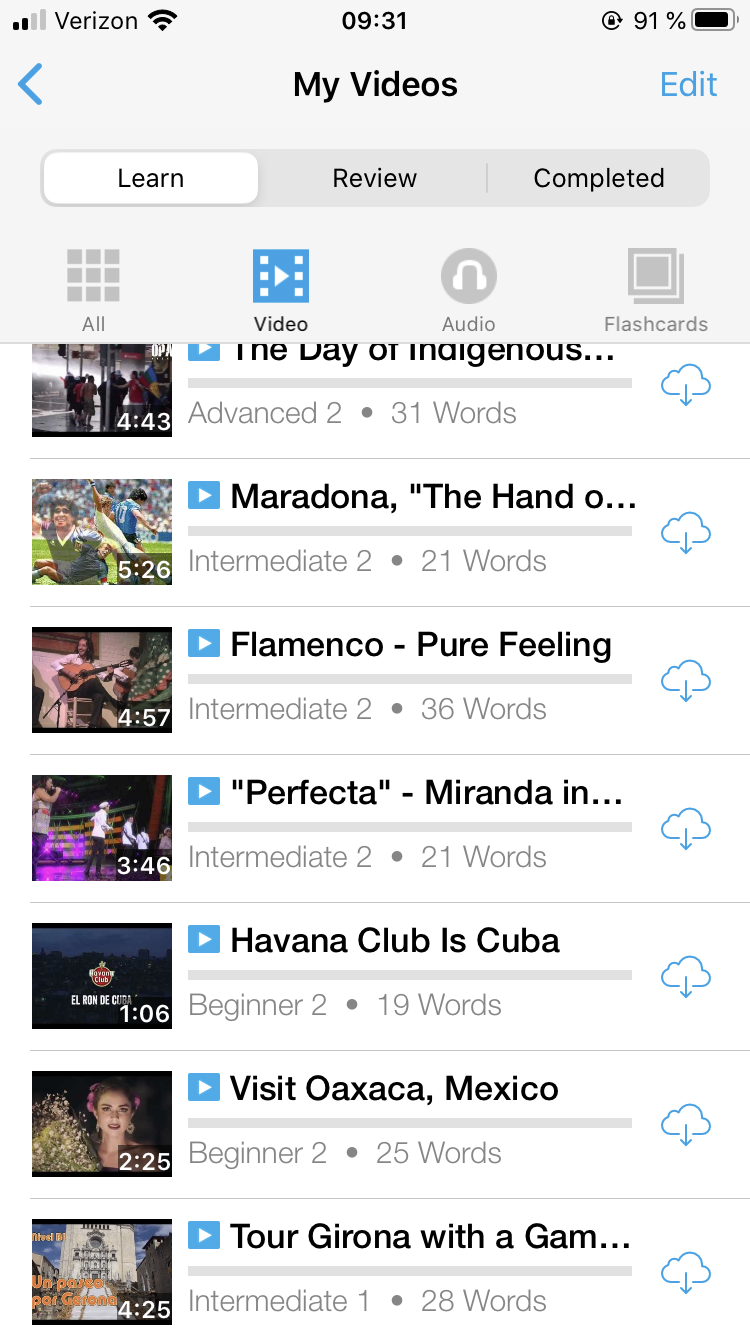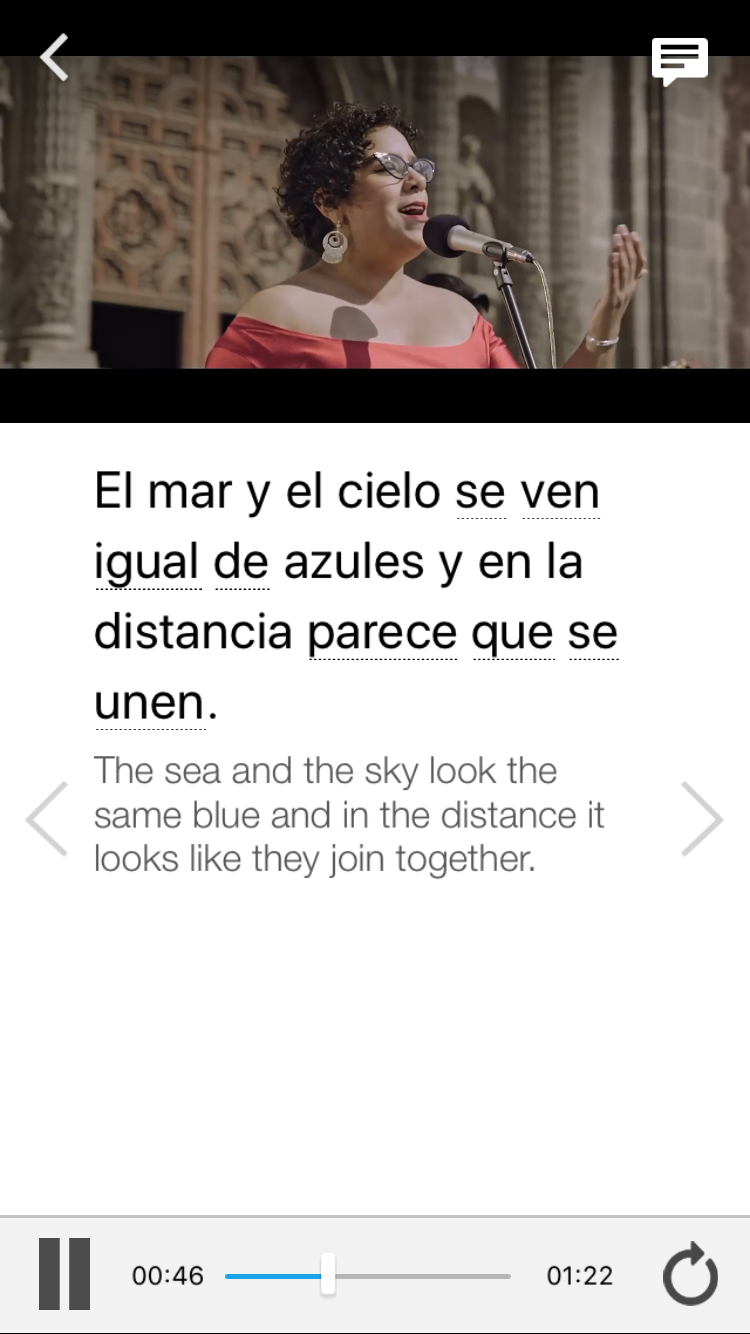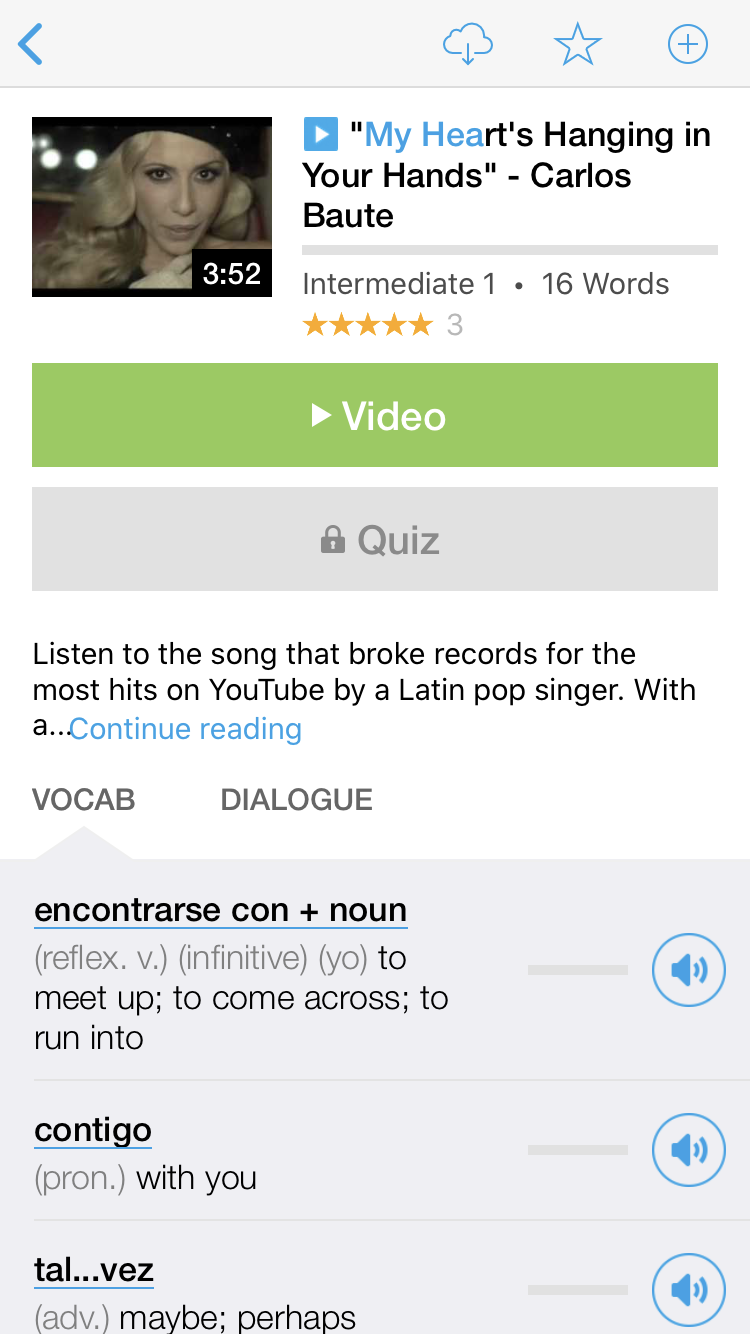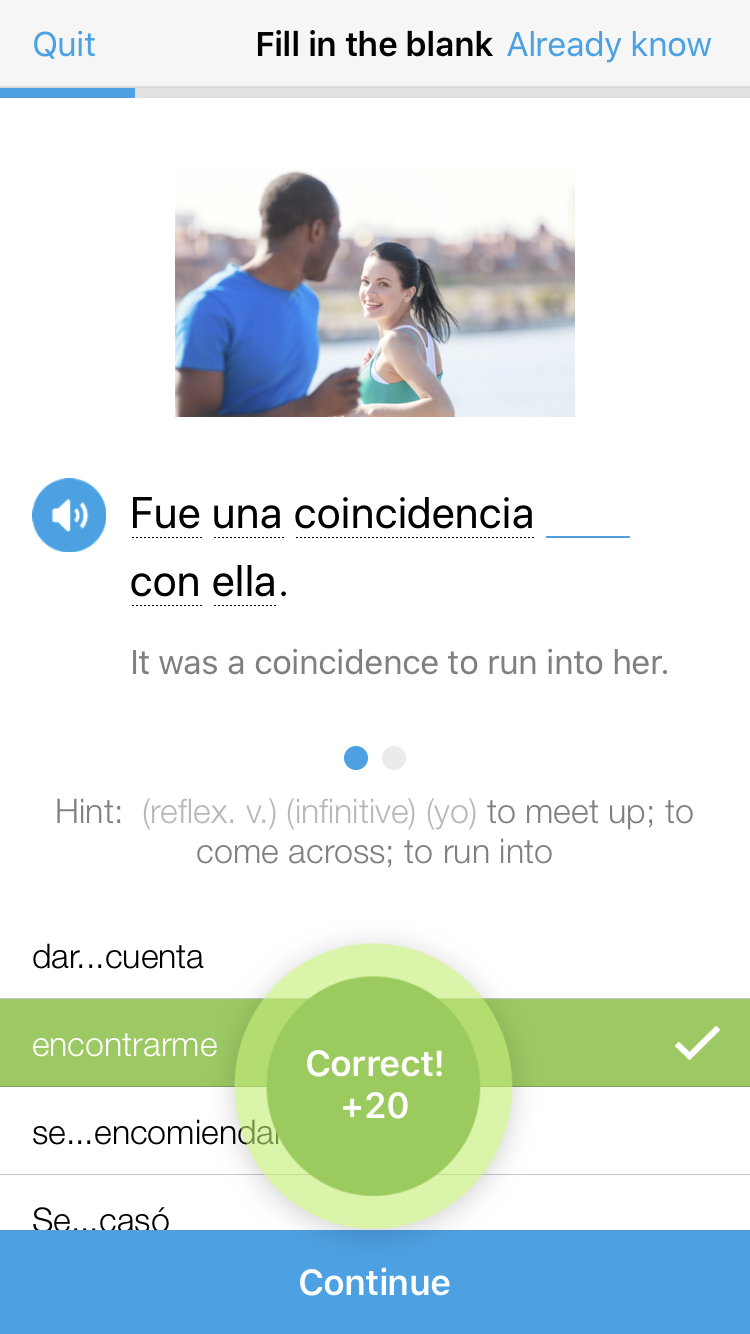
How many different ways can you say the same thing?
In your native language, chances are that you can come up with multiple different words to communicate any idea you have.
That’s because all languages have plenty of synonyms, which are words with the same or extremely similar meanings.
The same is true in Spanish. For example, there are tons of ways to say “beautiful” and “cool,” and learning Spanish synonyms will not only enrich your vocabulary, but it will also help you impress native speakers!
In this post, you’ll find 22 of the most common sets of Spanish synonyms that you’re likely to encounter, and the nuanced differences in their meanings.
Contents
Download:
This blog post is available as a convenient and portable PDF that you
can take anywhere.
Click here to get a copy. (Download)
Responses and Pleasantries in Spanish
Okay: Vale
| Bueno
| Bien
| De acuerdo
Vale, bueno, bien and de acuerdo can all be used to express agreement, much like the English words “okay” and “alright.”
Vale is used predominantly in Spain.
The literal meanings are a bit more nuanced: bueno usually means “good,” bien means “well” and de acuerdo literally means “of agreement.” However, they can all be used to simply say “okay!”
Maybe: Tal vez
| Quizás
| Quizá
Tal vez, quizás and quizá mean “maybe,” “perhaps” and “possibly,” respectively.
Of course: Por supuesto
| Ciertamente
| Por cierto
| Claro
| Desde luego
| ¿Cómo no?
There are clearly quite a few ways to say “of course,” aren’t there?
Por supuesto most directly translates to “of course” while ciertamente is closer in meaning to “certainly.”
Por cierto can mean “certainly” or “indeed,” though it can also mean “by the way.”
Claro can be used to say “clearly.”
Desde luego can mean “of course” or “certainly.”
¿Cómo no? directly translates to “how/why not?”, but it’s used like “of course” or “sure.”
Nice to meet you: Encantado
| Es un placer
| Mucho gusto
These are all acceptable to say to someone you’re meeting for the first time.
Encantado literally means “enchanted” or “delighted.”
Es un placer means “It’s a pleasure.”
Mucho gusto literally means “much pleasure,” though since gusto can mean “taste,” it could also mean “much taste”—a clever pun in the making if you ever meet a chef!
Descriptive Words in Spanish
Cool: Guay
| Chévere
| Suave
| Genial
These can all mean “cool,” though there are many, many more words you can use, too.
Guay is used mostly in Spain, while chévere is Latin American.
Although suave literally means “smooth,” it can also mean “cool” in the right context (think of the English word “suave”).
Genial literally means “great” but it can also be used to mean “cool.”
Beautiful: Bello
| Guapo
| Precioso
| Bonito
| Lindo
| Maravilloso
Just like in English, there are plenty of ways to praise someone or something’s appearance in Spanish. This set of synonyms is used to express that something is “beautiful,” “gorgeous” or “pretty.” There are some slight differences between all the words, though!
Bello means “beautiful” (generally used to refer to women) and guapo is “good looking” (usually used for men).
It’s easy to associate precioso with “precious,” but it’s also used to mean “beautiful” or “gorgeous.”
Bonito is similar to “pretty.”
Lindo means “pretty,” “lovely” or “cute” and is usually reserved for more feminine things.
Maravilloso usually translates to “marvelous” or “wonderful” but when referencing appearances, it can also mean “beautiful.”
Remember: When you’re referring to a male, use the words with an -o ending. But if you want to call a woman beautiful, you’ll need to change the ending to -a (and the same rule generally applies to other adjectives that end in -o on this list!).
Different: Diferente
| Distinto
These both look pretty familiar, don’t they? You might even say they are… “different” and “distinct.” Spanish-English cognates are pretty awesome!
Kind: Amable
| Agradable
| Simpático
| Cariñoso
| Bueno
Amable, agradable and simpático most directly translate as “kind” or “nice.”
Cariñoso more literally means “affectionate” or “warm.”
Bueno literally means “good,” but it can also be used to describe something or someone as “nice.”
Unpleasant: Desagradable
| Antipático
Desagradable and antipático both mean “unpleasant,” as in an unpleasant person. Desagradable can also be used to refer to anything that is “disagreeable,” like a bad smell or taste.
Difficult: Duro
| Difícil
| Pesado
Duro, difícil and pesado can be used to mean “hard” or “difficult.” Duro can also be used to describe something (like food, material or people) as “tough”: huevos duros, for instance, is the Spanish term for hard-boiled eggs.
On the other hand, pesado can also refer to “heavy” things—both literally and figuratively.
Small: Pequeño
| Chico
Both words are used to describe something that is “small” or “little.”
However, it’s important to note that chico can also mean “kid” or “boy.”
Now: Ahora
| Actualmente
| Hoy día
| Al presente
If you want to refer to something as happening “now,” you have your choice of these words.
Ahora most literally means “now.” In some areas of Latin America, you might hear the diminutive version of this, ahorita, to mean “right now.”
Actualmente translates more as “at the moment” or “currently.”
Hoy día literally means “today,” while al presente means “at the present.”
Spanish Nouns
Language: Lengua
| Idioma
Lengua and idioma can both be used to refer to language. While lengua can be used to speak about a “tongue” (as in, a language), it can also refer to the anatomical “tongue.”
Student: Estudiante
| Alumno
Either word can refer to a “student” or “pupil.”
Job: Trabajo
| Empleo
Empleo refers predominantly to someone’s employment.
Trabajo can be used to speak about an employment position, a particular task or “work” in general.
Office: Oficina
| Despacho
Oficina and despacho are both used to mean “office.”
Glasses: Gafas
| Anteojos
| Lentes
All of these words can mean “glasses,” though each has some other possible meanings.
For instance, gafas can also mean “goggles” or “clamp.” Anteojos can also refer to “binoculars” or “telescopes.” Lentes can refer to “lenses” or “contact lenses.”
You will generally hear gafas in Spain, while lentes is more common in Latin America—in Spain, lentes is used in a more technical sense to mean “lens,” like the kind in a microscope.
And if you add de sol to any of these words, you turn glasses into sunglasses!
Spanish Verbs
To send: Mandar
| Enviar
Mandar can also mean “to order,” while enviar more directly means “to ship” or “to mail.”
To walk: Caminar
| Andar
| Pasear
| Recorrer
| Marchar
When used to mean “to walk,” caminar, andar and marchar are fairly direct—they simply refer to the act of walking on foot.
Pasear and recorrer are a bit more specific: Pasear is more similar to the English “to stroll,” while recorrer is similar to “to travel/walk around.”
To choose: Elegir
| Escoger
| Seleccionar
Elegir and escoger can also mean “to elect” (such as voting in an election), while seleccionar can also mean “to select.”
To say: Decir
| Mencionar
| Contar
Although these all mean “to say,” they have varying degrees of intensity: Decir means “to say” or “to tell,” mencionar means “to mention” or “to indicate” and contar more directly translates as “to tell.”
To watch / To see: Ver
| Mirar
| Observar
| Contemplar
Although ver and mirar can be interchangeable terms in much of the Spanish-speaking world, ver is more often used to mean “to see” or “to watch”—as in ver la televisión (to watch TV)—while mirar usually means “to look at.”
Observar means, you guessed it, “to observe.”
Contemplar more literally means “to gaze at” or “to consider,” close to the word it resembles in English: “to contemplate.”
As you’ve seen above, there are tons of Spanish synonyms, and learning them will help you expand and enrich your Spanish vocabulary.
A great way to pick up synonyms and learn how they are used by native speakers is by immersing yourself in the language. For example, you could try to compare the words used by native Spanish speakers while watching Spanish movies or TV shows. If possible, you could even switch between Castilian Spanish and Latin American Spanish subtitles or audio and see if you can find any synonyms.
If you’re interested in Spanish immersion with language learning support, you could also try a language learning program like FluentU.
When you’re looking for the perfect thing to say, the ideal statement to make or the most excellent proclamation to declare, try out these Spanish synonyms!
Download:
This blog post is available as a convenient and portable PDF that you
can take anywhere.
Click here to get a copy. (Download)
And One More Thing…
If you’ve made it this far that means you probably enjoy learning Spanish with engaging material and will then love FluentU.
Other sites use scripted content. FluentU uses a natural approach that helps you ease into the Spanish language and culture over time. You’ll learn Spanish as it’s actually spoken by real people.
FluentU has a wide variety of videos, as you can see here:

FluentU brings native videos within reach with interactive transcripts. You can tap on any word to look it up instantly. Every definition has examples that have been written to help you understand how the word is used. If you see an interesting word you don’t know, you can add it to a vocab list.

Review a complete interactive transcript under the Dialogue tab, and find words and phrases listed under Vocab.

Learn all the vocabulary in any video with FluentU’s robust learning engine. Swipe left or right to see more examples of the word you’re on.

The best part is that FluentU keeps track of the vocabulary that you’re learning, and gives you extra practice with difficult words. It’ll even remind you when it’s time to review what you’ve learned. Every learner has a truly personalized experience, even if they’re learning with the same video.
Start using the FluentU website on your computer or tablet or, better yet, download the FluentU app from the iTunes or Google Play store. Click here to take advantage of our current sale! (Expires at the end of this month.)



